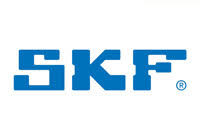V-ribbed belts
The V-ribbed belt is a further development of the V-belt and works according to the same principle: It acts as a transmission belt, connects the V-belt pulleys and transmits the force from...
Function
The V-ribbed belt is a further development of the V-belt and works according to the same principle:
- It acts as a transmission belt,
- connects the V-belt pulleys and
- transmits the force from the engine to the ancillary components including the alternator, the hydraulic pump for the power steering, the air conditioning compressor, the fan and the water pump.
In a combustion engine, the combustion of the air/fuel mixture drives pistons. Via connecting rods, the movement of these pistons in a straight line is converted into the rotation of the crankshaft. The V-belt uses the force from the rotation (torque) of the crankshaft and drives additional units via V-ribbed belt pulleys. As such it is responsible for the correct operation of the engine and high levels of ride comfort. The V-ribbed belt has an advantage over the V-belt in that it is able to transmit the torque from the engine to several units at the same time.
Depreciation
Nobody would want to be left stranded in their vehicle on account of a torn V-ribbed belt because power cannot be supplied to the engine or the engine has overheated due to a failed water pump. V-ribbed belts are non-positive drive components. Their functional principle is based on friction. Therefore, they are exposed to a process of wear. For this reason, the service and replacement intervals set out by the vehicle manufacturers should be observed and V-ribbed belts should be replaced if necessary, all the more so because the associated costs are usually reasonable. The full functionality of the engine and a comfortable ride can only be assured if the engine is in perfect working order.
Safety
The ancillary components drive provides the driver with an assurance of high levels of comfort and safety. The V-ribbed belt drive drives the air conditioning compressor, ensuring that the temperature inside the vehicle can be regulated. It also ensures that the power steering assists the driver when steering. The alternator drive ensures not only that the necessary electrical energy (e.g. for sparking ignition or for the injection system) is supplied to the engine but also that electrical loads such as the heated rear window, lighting, heated seats, the navigation system and the ABS and ESP are supplied with power. The water pump powered by the drive ensures that the coolant circulates in the engine, thereby preventing the inconvenience that would be caused by breaking down due to the engine overheating.
Environmental protection
The V-ribbed belt is flatter and wider than the V-belt. Its longitudinal ribs enable it to transmit higher forces. Smaller angles of contact are also possible with the V-ribbed belt. Since the late 1980s/early 1990s, V-ribbed belts have almost completely replaced V-belts in the field of passenger cars. This is because a V-belt can usually only drive one or two units. Furthermore, lack of flexibility at the back of belt means that a serpentine-like drive cannot be reproduced with a V-belt. A multi-belt drive would be required to drive multiple units with a V-belt. However, this would take up more space. Despite the high number of ancillary components, a single-belt drive can be implemented with a V-ribbed belt. As a result, resources can be saved in the design and development of the belt drive and in its production, and the environment can be preserved.







